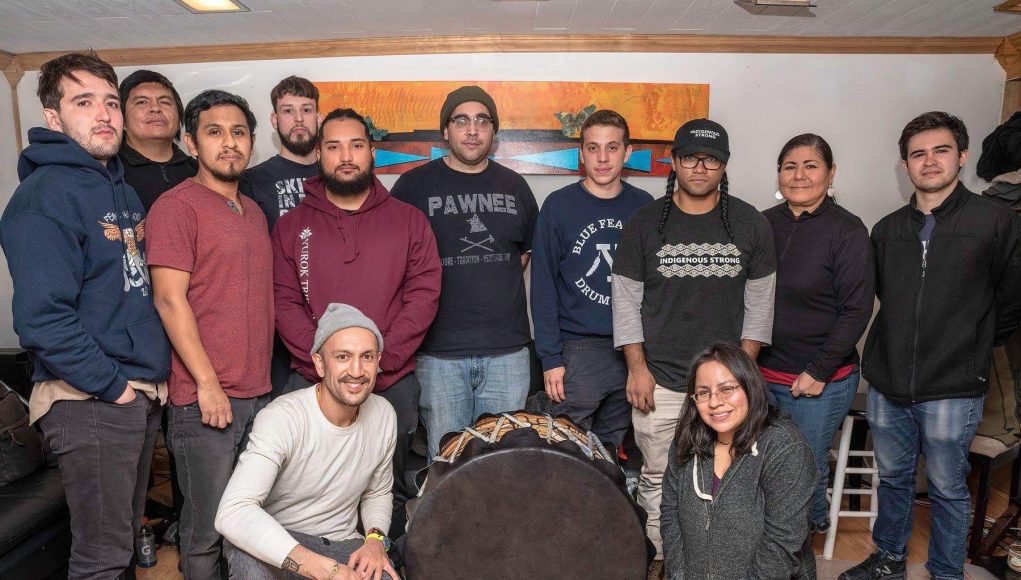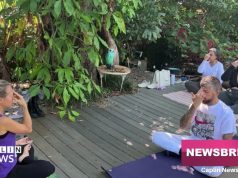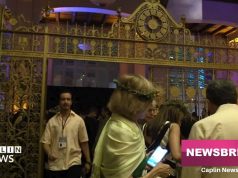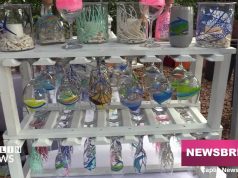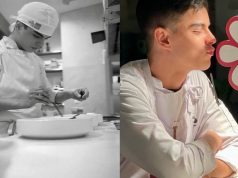From a Seminole from Florida to a member of the Makah tribe from Washington state, a group of Native Americans have come together to form a drum group in their newfound home in Washington, D.C.
Mark Herrera, a member of the Seminole tribe and a student at Howard University, has found a way to stay connected to his home in the Sunshine State. Drumming is not only a way to connect to past ancestors, but a form of prayer for him.
Herrera, 23, is from Seminole County, Florida, and was raised just outside of Orlando. He has been living in the nation’s capital for the past two years. Having been born and raised among Native Americans, Herrera says he has always been cognizant of his heritage, even while Census figures put the Native American population of Florida at less than one percent of the state’s residents. After serving in the armed forces for a couple of years, Herrera attended community college and then transferred to Howard University. He’s been singing at powwows for the past three years.
“This decision (to come to Washington) was made partly because I wanted to not only be in DC as a political science major,” said Herrera, “but also to be educated in an institution which has produced some of the greatest black minds in America,” he tells the Caplin News, adding that he hopes to stay and attend law school in Washington upon graduation.
Most Native American drum groups are comprised of members from the same tribe or same geographical area, but not Herrera’s. His drum group, The Uptown Boyz DC, is comprised of men and women representing members of tribes as diverse as not only the Seminoles and Makah, but also the Lakota, Northern Cheyenne, Stockbridge, Munsee, Omaha, Pamunkey, and even Piscataway — the original inhabitants of what is known today as the city of Washington, D.C.
“Many of us have sung on different drums before,” said Herrera. “Ultimately, we decided that our drum would serve the community.”
The drum group provides the music at powwows, a social gathering of Native Americans that can last as short as a day or as long as a week and includes dancing, singing, arts and crafts, and plenty of food. At a powwow, men sit at a large drum while women stand behind as a support and backup singing for the male singers. The term “powwow” is derived from an indigenous word meaning “spiritual leader.”
“When you’re in a city, you kind of lose a bit of your culture,” said Herrera. “Being in a drum group helps you maintain some of your nativeness. It gives you a sense of belonging,” Herrera said, adding that their group provides an important cultural element. “Without any music there couldn’t be dancing at powwows,” said Herrera.
Many of the songs the Uptown Boyz DC sing are recent compositions, but older traditional songs often sung today can be traced back to more than 200 years ago.
“Some songs are tribal specific, some are ceremonial specific, and some dance specific,” Herrera tells the SFMN. “So it is up to the lead singer to choose the most appropriate song at the right time.”
Herrera’s drum group has performed at a wide variety of venues, including the Kennedy Center, The Smithsonian National Museum of The American Indian, and at rock concerts, rallies, and even protests.
“The (Native American) community looks toward us to provide a steadfast representation of song and prayer,” said Herrera. “We are always honored and happy to oblige. Not everyone has the ability to sing, but I was always taught if you can sing, always sing for the people.”
Dances vary based on geographic regions and tribes. There are also different styles of singing- northern and southern, with northern singing at a higher pitch and southern at a lower baritone level.
“The drum is more than an instrument,” said Herrera. “It’s like a living being. If you take care of it, it’ll take care of you.”
Alexis Woodyard is a reporter in the Caplin News’s Washington, D.C., Bureau.


























